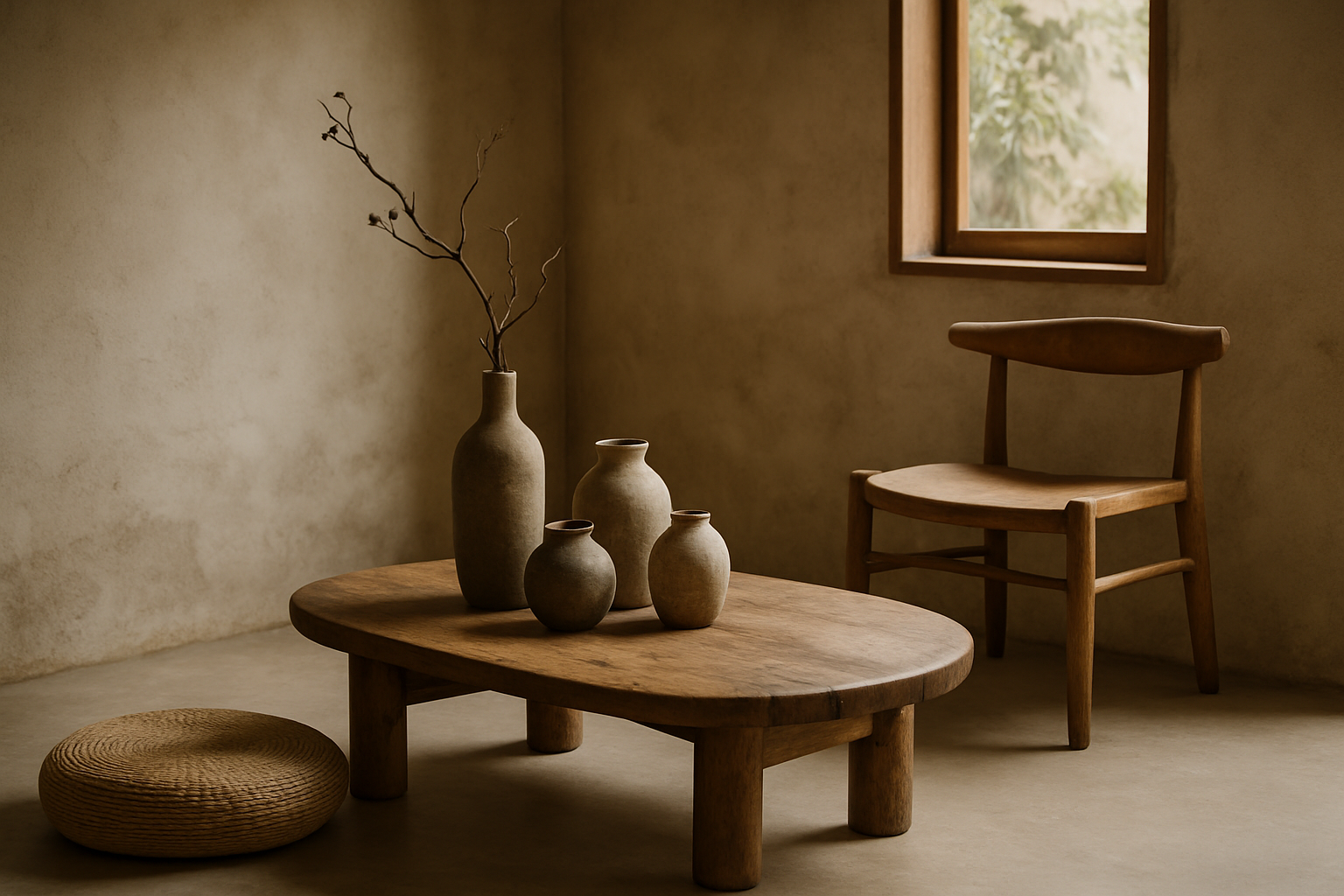Wabi-Sabi: The Art of Imperfect Beauty in Home Design
In a world obsessed with flawlessness, a quiet revolution is taking place in home interiors. Wabi-sabi, an ancient Japanese philosophy celebrating imperfection, is making its mark on modern design. This approach, rooted in finding beauty in the incomplete and impermanent, offers a refreshing counterpoint to the polished perfection often sought in contemporary homes. As we explore the essence of wabi-sabi, we'll discover how embracing imperfection can create spaces of unparalleled warmth, character, and authenticity.

Origins and Philosophy of Wabi-Sabi
The roots of wabi-sabi trace back to 16th century Japan, emerging from Zen Buddhist philosophy. Originally, wabi referred to the loneliness of living in nature, while sabi meant withered or lean. Over time, these concepts evolved to embody a worldview that finds beauty in simplicity, nature, and the imperfections of life.
In the context of home design, wabi-sabi translates to an aesthetic that values authenticity over artifice, simplicity over complexity, and the imperfect over the flawless. It’s about creating spaces that feel organic, lived-in, and deeply connected to the natural world. This philosophy stands in stark contrast to the often sterile and overly curated interiors that have dominated design trends in recent years.
Key Elements of Wabi-Sabi Design
Implementing wabi-sabi in home design involves several key elements. Natural materials take center stage, with raw wood, stone, clay, and linen featuring prominently. These materials are celebrated for their inherent textures and imperfections, often left untreated or minimally finished to showcase their natural beauty.
Color palettes in wabi-sabi interiors tend to be muted and earthy, drawing inspiration from nature. Think soft greys, warm browns, and subtle greens. These colors create a calming backdrop that allows the textures and forms of individual elements to shine.
Asymmetry and irregularity are embraced, breaking away from the rigid lines and perfect symmetry often associated with modern design. A slightly off-center arrangement of objects or an irregularly shaped piece of furniture can add visual interest and a sense of organic growth to a space.
Incorporating Wabi-Sabi into Your Home
Adopting a wabi-sabi approach doesn’t mean completely overhauling your space. It’s about shifting perspective and making thoughtful choices. Start by decluttering and simplifying your space, keeping only items that truly resonate with you or serve a purpose. This creates room for intentional imperfection.
Introduce handcrafted items into your decor. Whether it’s a hand-thrown pottery piece, a woven basket, or a roughly hewn wooden stool, these items bring a sense of human touch and authenticity to your space. Look for pieces that show the marks of their making – visible brush strokes, uneven glazes, or knots in wood are all celebrated in wabi-sabi design.
Consider leaving some elements of your home unfinished or exposed. An unplastered wall section, exposed wooden beams, or weathered floorboards can add character and depth to a room. These elements tell a story and connect your space to its history and the passage of time.
The Art of Repair in Wabi-Sabi
One of the most beautiful aspects of wabi-sabi is its approach to repair and maintenance. Instead of hiding signs of wear or damage, wabi-sabi celebrates them. The Japanese art of kintsugi, where broken pottery is repaired with gold-dusted lacquer, is a perfect embodiment of this principle.
In your home, this might translate to visible mends in textiles, patched leather furniture, or repurposed items given new life. These repairs become part of the object’s story, adding to its character and charm. This approach not only creates unique, one-of-a-kind pieces but also promotes sustainability by extending the life of objects rather than discarding them when damaged.
Wabi-Sabi and Mindful Living
Beyond aesthetics, embracing wabi-sabi in your home can lead to a more mindful way of living. It encourages a shift away from constant pursuit of perfection and material accumulation towards an appreciation of simplicity and impermanence.
A wabi-sabi home invites you to slow down, to notice the small details and subtle changes in your environment. It creates spaces that feel calm and grounded, offering respite from the fast-paced, often overwhelming outside world. By surrounding yourself with objects and materials that age gracefully, you’re reminded of the beauty of the life cycle and the value of embracing change.
Balancing Wabi-Sabi with Modern Living
While wabi-sabi has its roots in ancient philosophy, it’s remarkably well-suited to contemporary life. The key is finding a balance between the rustic, imperfect elements of wabi-sabi and the comforts and conveniences of modern living.
This might mean pairing a weathered wooden dining table with sleek, modern chairs, or placing a roughly textured linen throw over a streamlined sofa. In the kitchen, high-tech appliances can be balanced with open shelving displaying a collection of handmade ceramics. The goal is to create a space that feels both grounded in tradition and relevant to today’s lifestyle.
The Future of Wabi-Sabi in Home Design
As we move forward, the principles of wabi-sabi are likely to gain even more traction in the world of interior design. In an era increasingly dominated by digital perfection and virtual realities, there’s a growing desire for spaces that feel authentic, tactile, and connected to the natural world.
Wabi-sabi offers a way to create homes that are not just visually appealing, but emotionally resonant. It allows for spaces that evolve and grow with their inhabitants, accumulating stories and memories over time. As we continue to grapple with issues of sustainability and overconsumption, the wabi-sabi approach of valuing what we have and finding beauty in imperfection becomes ever more relevant.
In embracing wabi-sabi, we’re not just adopting a design trend, but a philosophy that can transform our relationship with our homes and possessions. It invites us to slow down, to appreciate the beauty of the moment, and to find joy in the imperfect, ever-changing nature of life. In doing so, we create spaces that are not just beautiful, but deeply meaningful and truly our own.





